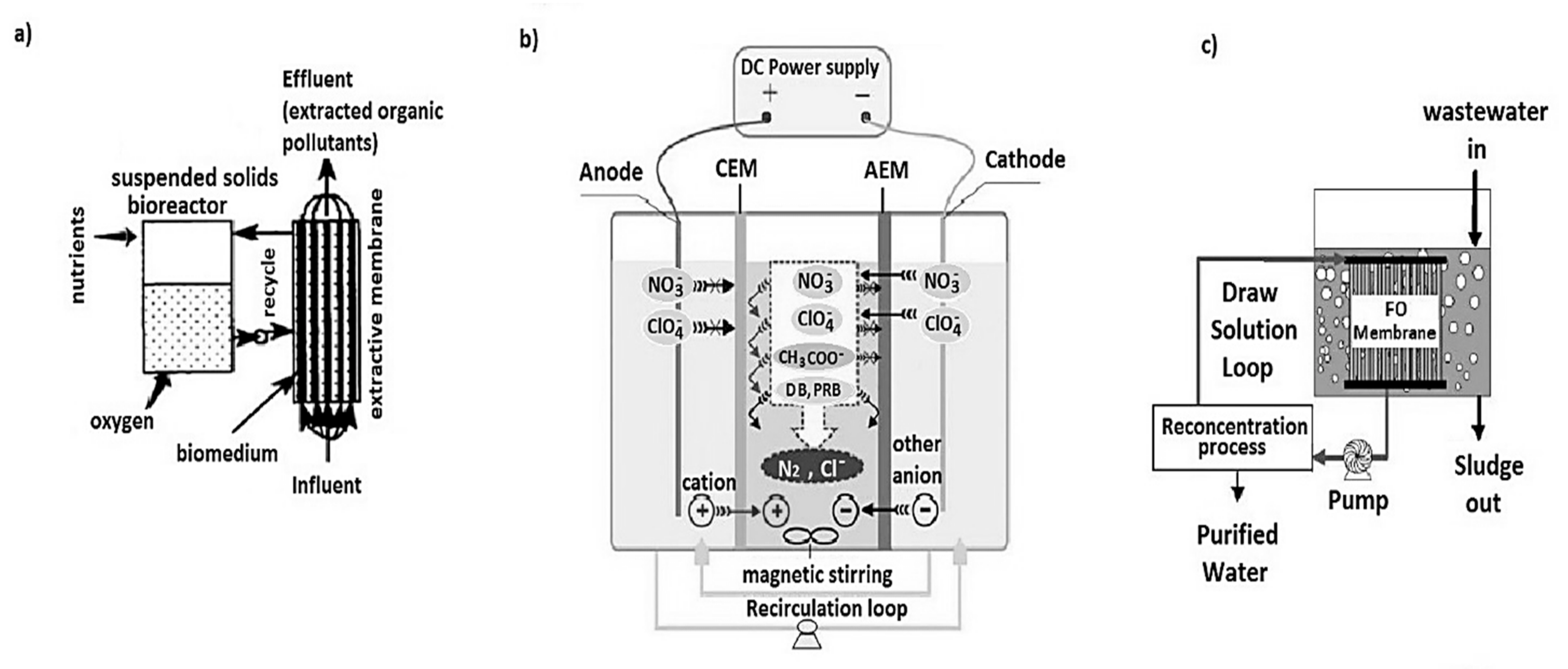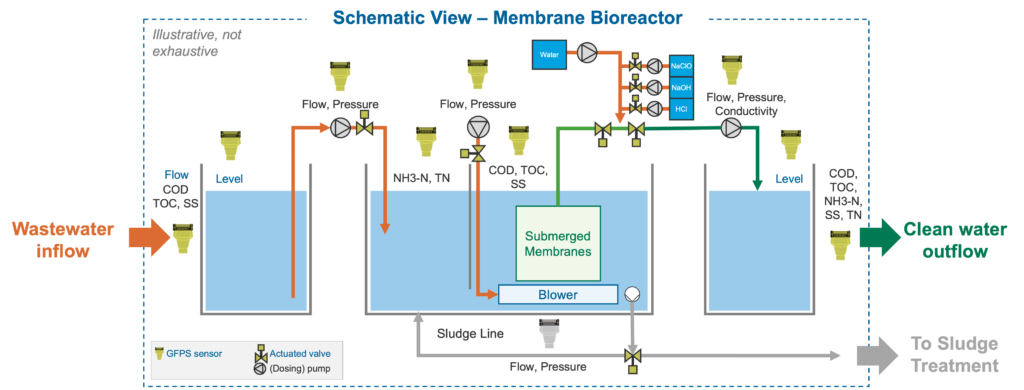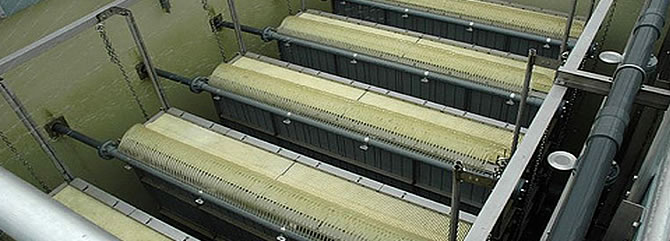Membrane Bioreactors Explained: Effective Solutions for Tidy Water
Membrane layer bioreactors (MBRs) have actually become a sophisticated service for attending to journalism challenges of wastewater treatment. By integrating biological procedures with sophisticated membrane layer purification, MBRs not only enhance the quality of cured water but also decrease the spatial requirements of treatment facilities. As environmental worries increase, the function of MBR modern technology in advertising sustainable water management becomes significantly substantial. Nonetheless, the complexities of their procedure, advantages, and prospective applications merit a closer exam to fully understand their influence on the future of water therapy.

What Are Membrane Layer Bioreactors?
Membrane layer bioreactors (MBRs) are advanced wastewater treatment systems that incorporate organic destruction procedures with membrane filtering innovation. This assimilation enables for the efficient removal of contaminants from water, making MBRs a recommended option in different applications, including metropolitan wastewater therapy and industrial effluent management.

Among the critical advantages of MBRs is their capability to produce top notch effluent, often suitable for reuse in irrigation or industrial processes. Furthermore, MBRs need a smaller sized footprint compared to traditional treatment systems, making them optimal for urban setups where space may be restricted.
Additionally, MBRs can properly handle differing influent tons and are less prone to the effects of harmful shocks. These qualities add to their expanding popularity as a sustainable remedy for resolving the enhancing need for tidy water while decreasing environmental impacts.
Exactly How Membrane Bioreactors Work
While the procedure of membrane bioreactors (MBRs) might appear complex, it essentially rotates around the harmony between organic procedures and membrane layer purification. MBRs incorporate a biological treatment procedure, usually turned on sludge, with a membrane layer splitting up unit to treat wastewater successfully.
In an MBR system, wastewater is first introduced into a bioreactor where microorganisms break down natural issue and other impurities. The biological activity lowers the focus of contaminants while promoting the development of biomass. Following this biological therapy, the mixed liquor goes through membrane filtration, which can be microfiltration or ultrafiltration, depending upon the desired effluent quality.
The membrane layers function as a physical obstacle, permitting water and tiny solutes to pass while retaining put on hold solids and larger particles. This makes it possible for the system to maintain a high concentration of biomass within the activator, improving the treatment efficiency.
Additionally, the continuous splitting up of cured water from the biomass facilitates a small design and reduces the footprint of the treatment facility. Generally, the mix of biological deterioration and membrane layer filtration in MBRs results in reliable and effective wastewater treatment, guaranteeing high-grade effluent suitable for different applications.
Benefits of MBR Modern Technology
Among the essential benefits of membrane layer bioreactor (MBR) technology is its ability to produce high-quality effluent with a dramatically minimized impact contrasted to conventional wastewater therapy approaches. MBR systems properly combine organic treatment and membrane purification, causing superior removal of contaminants, including put on hold solids, pathogens, and raw material. This capacity brings about effluent that frequently fulfills or exceeds rigorous regulatory requirements for reuse and discharge.
Additionally, MBR innovation enables higher biomass focus, which boosts the treatment effectiveness and reduces the called for reactor quantity. This compact style is specifically useful in city locations where space is limited. The operational flexibility of MBR systems also indicates they can adapt to differing influent high qualities and circulation prices, making them suitable for a wide variety of applications.
Additionally, the decreased sludge production connected with MBR procedures adds to decrease functional and upkeep expenses. The membrane layers work as a physical obstacle, lessening the threat of blocking and making it possible for longer operational periods in between cleansing. Generally, the benefits of MBR innovation make it an attractive remedy for sustainable wastewater therapy, resolving both ecological issues and the requirement for efficient resource management.
Applications of Membrane Layer Bioreactors
With their flexibility and efficiency, membrane layer bioreactors (MBRs) discover applications throughout various industries, including local wastewater treatment, industrial procedures, and also water reclamation. In you can try here metropolitan setups, MBRs supply a compact option for treating wastewater, efficiently getting rid of impurities while simultaneously creating high-quality effluent that satisfies strict governing criteria. This makes them especially appropriate for areas with restricted space.
In industrial applications, MBR technology is utilized for treating process water, particularly in sectors such as food and beverage, drugs, and petrochemicals. These industries take advantage of MBRs' ability to handle high natural tons and their effectiveness in recovering beneficial sources from wastewater, such as nutrients and water.
Moreover, MBRs play an important duty in water recovery initiatives, enabling the reuse of dealt with wastewater for watering, commercial processes, and even as safe and clean water after additional therapy (Membrane Bioreactor). Their effectiveness in removing microorganisms and toxins makes them a trusted choice for making certain water top quality in different reuse applications
Future of Water Therapy Solutions
The future of water treatment remedies is positioned for transformative advancements driven by technical technology and increasing environmental awareness. As global water shortage ends up being a pressing issue, brand-new methods, consisting of membrane bioreactor (MBR) systems, are established to play a crucial duty in improving the efficiency and sustainability of water treatment procedures.
Arising innovations such as fabricated knowledge and device understanding are anticipated to maximize therapy operations, permitting for real-time tracking and predictive upkeep. This will improve the general reliability and efficiency of water treatment facilities. Additionally, developments in membrane materials, such as graphene and nanofiltration, assure to boost permeation rates and reduce fouling, bring about reduced power consumption and functional costs.
Additionally, the integration of renewable power sources into water treatment plants will certainly add to greener techniques. The circular economic climate version will certainly also acquire grip, urging the recovery of important sources from wastewater, such as nutrients and energy.
Verdict

Membrane bioreactors (MBRs) have actually arised as an advanced service for resolving the pushing challenges of wastewater treatment. By integrating organic procedures with advanced membrane layer filtration, MBRs internet not only enhance the quality of treated water but likewise reduce the spatial needs of treatment centers.One of the essential benefits of membrane bioreactor (MBR) modern technology is its capacity to produce top quality effluent with a dramatically reduced impact contrasted to standard wastewater treatment techniques.With their convenience and efficiency, membrane bioreactors (MBRs) locate applications throughout various industries, including local wastewater therapy, commercial procedures, and even water improvement.In verdict, membrane layer bioreactors represent a considerable development in wastewater treatment innovation, incorporating biological procedures browse this site with reliable membrane layer filtering to create high-grade effluent.